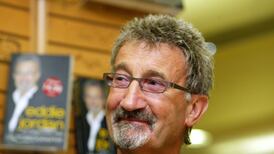Luchita Hurtado
Born: November 28th, 1920
Died: August 13th, 2020
Recent years have seen a number of female artists rise to international prominence after long decades of subdued careers. Many have exceptional life stories. One of the most surprising was the Venezuelan-American painter, photographer, poet and diarist Luchita (Luisa Amelia Garcia Rodríguez) Hurtado, who has died at the age of 99.
She began making art in her teens, and persisted undaunted through decades of marriage, motherhood and many moves. But Hurtado had to wait until the age of 98 for her first solo museum show, which opened at the Serpentine Sackler Gallery in London in 2019, then moved on to the Los Angeles County Museum of Art in February this year.
Apart from a solo display in the Woman’s Building in Los Angeles in 1974, and one further exhibition in Los Angeles in 2016, these were, until now, her only individual public shows.
Luchita Hurtado was born in 1920 in Maiquetía, Venezuela, and emigrated to New York in 1928 with her mother; she never saw her father again. After growing up in New York City, her life was peripatetic. She married her first husband, the Chilean journalist Daniel del Solar, when she was just 18, while working at the Spanish-language newspaper La Prensa. The couple had two sons, Daniel and Pablo, and lived among a milieu of Latin intellectuals in Santo Domingo and Washington DC.
Fashion illustrator
She divorced del Solar in the mid-1940s and moved back to New York, supporting her young sons by working as a fashion illustrator for Condé Nast. In 1946 she married an Austrian Surrealist painter and publisher, Wolfgang Paalen, who was living in Mexico City. After Hurtado and her children moved there to join him, she was immersed in the lively Surrealist circles that included Frida Kahlo and Diego Rivera, Leonora Carrington and many others. Her own paintings from the time reflect Surrealist influences.
Mexico in the late 1940s was a vibrant centre for American and exiled European artists. Moving between Mexico City and New York, Hurtado was in contact with an extraordinary range of painters, writers, photographers and filmmakers, including Marc Chagall, Fernand Léger, Joan Miró, André Breton, Luis Buñuel and Roberto Matta.
She had a talent for friendship and was always intellectually hungry; her work from these years shows that eagerness for new input, new experience. Her second marriage was as short-lived as the first, however, and Hurtado's stay in Mexico came to an end after her younger son died of polio and the family moved to California. There she met and married another artist, Lee Mullican, with whom she had two more sons, Matt and John.
A rich outpouring of highly personal drawings, photographs, paintings that, she later said, were conjured from `the whole of a life's experience'
The Mullicans settled in Santa Monica in 1951.The demands of family life meant that during these years Hurtado continued her art entirely privately, without any involvement with the commercial gallery system, working only at night while everyone was asleep.
Self-portraits
A series of remarkable self-portraits painted in the late 1960s, displayed at the Serpentine last year, show the artist looking straight downwards at her body, over her naked breasts and belly to her bare feet on a patterned rug. She was standing inside a walk-in wardrobe, the only space she had in which to make her work. Yet the art continued: a rich outpouring of highly personal drawings, photographs, paintings that, she later said, were conjured from “the whole of a life’s experience”.
Their range is wide: in brilliant and bold colours Hurtado produced Surrealist figuration, biomorphic and geometric abstracts, work deeply involved with the natural world and environmentalism, or echoing the ancient cultures of the Americas. By the 1970s, Hurtado’s growing interest in feminism also found its place in her art. Very few people saw her work, or were aware of it. But during the 1970s and 1980s, mostly at the encouragement of other female artists active on the West Coast, she occasionally exhibited in group shows.
In 1998, Mullican died. When the director of his estate was sorting through Mullican's work he came across many other brilliant canvases and works on paper, signed LH. It was the beginning of Hurtado's "discovery" by the wider international art world. In 2019, she received the Americans for the Arts Carolyn Clark Powers Lifetime Achievement Award, and was listed in Time magazine's 100 most influential people.
Indomitable
Today, public collections across the world, including the Metropolitan Museum and the Museum of Modern Art in New York, the Hammer Museum in Los Angeles and the British Museum in London, feature work from the 80-year career of this most indomitable of artists.
She is survived by Matt and John, and by two grandchildren, Cosmo and Lucy. Her son Daniel died in 2012.














